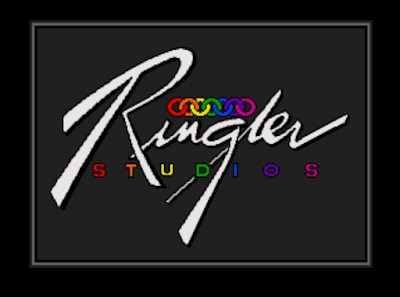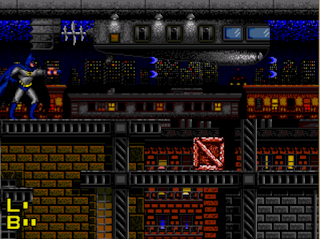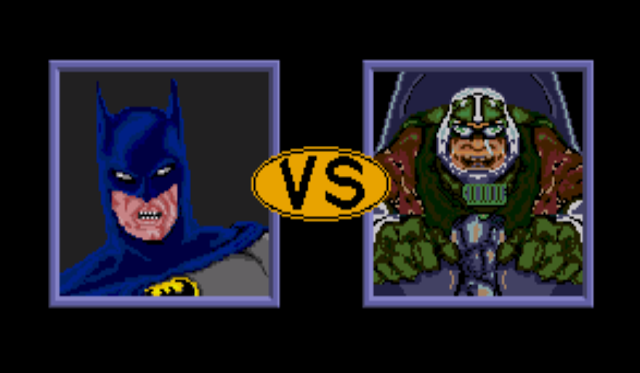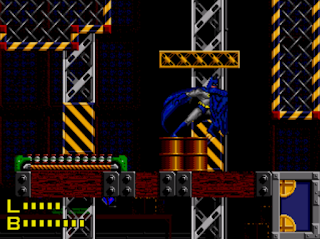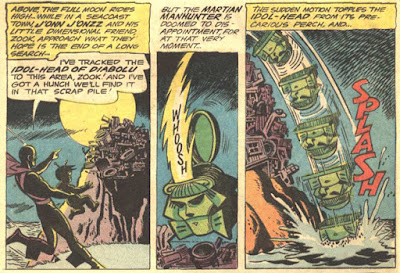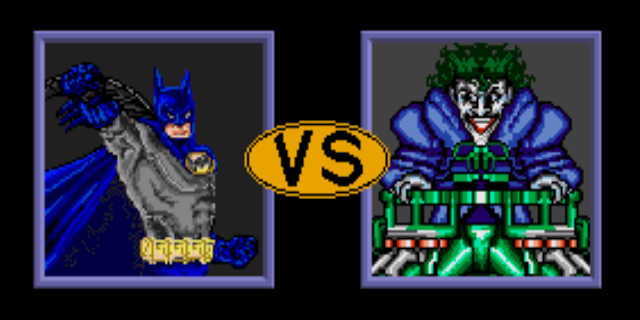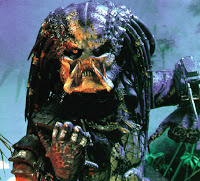Karl Kesel and Barbara Kesel wrote this mini-series, while Mike Carlin edited (and Renee Witterstaetter was the assistant editor).
As one of DC's more recognized inkers since he started in 1984's New Talent Showcase, this mini-series was Karl Kesel's first credited work for DC comics as a writer (I say 'credited' because I know that he was giving creative input to 1987's Suicide Squad while he inked the series). Among other things, Barbara Kesel (né Randall) had written several Batgirl and Superman stories (as well as most of the copy for the Who's Who in the Legion of Super-Heroes limited series) prior to this mini-series.
Karl and Barbara had gotten married shortly before the publication of this mini-series (between the inking of issues #1 and #2) — just in case you were wondering why they both had the Kesel surname. Along with this mini-series, Mike Carlin was also editing The Shadow, Power of the Atom, Superman, Adventures of Superman, Doc Savage and The Cosmic Odyssey limited series. My best guess is that Witterstaetter was assisting Carlin with whatever projects he was overseeing. According to Barbara, the idea of the new Hawk & Dove was originally pitched with the intent of being used as a feature in a new anthology series being developed, but Carlin saw the potential in the duo and decided to give it the mini-series treatment instead.
 |
| House ad for Hawk & Dove mini-series |
First, a little background on the head-lining characters:
Hawk & Dove first debuted in DC's Showcase #75 (1968). Created by Steve Ditko and Steve Skeates, Hawk (Hank Hall) & Dove (Don Hall) were two teen-aged brothers who, when they spoke the magic word ["Hawk" or "Dove", respectively], transformed into super-heroes. Hawk was the brash aggressive one, and Dove was the passive, thinking man's hero. If you want to get political about it, Hawk is the 'take no prisoners' macho conservative and Dove is the extreme-left bleeding heart liberal — and you should get political about it, because that's what inspired these characters. As then-editor Dick Giordano explained in the letter-column of Showcase #75:
The creation of these characters was pretty relevant and timely, as the United States' involvement in the Vietnam War caused an uproar of protests (especially among college students) during the mid-to-late 1960s. Don't discount how much of a hot-button issue the Vietnam War was to Americans in the late 60s/early 70s — according to A People's History of the United Stated by Howard Zinn, "In August of 1965, 61 percent of the population thought the American involvement in Vietnam was not wrong. By May 1971 it was exactly reversed; 61 percent thought our involvement was wrong." DC was striking where the iron was hot, and there was no hotter topic than the Vietnam War.
Shortly after their Showcase debut, Hawk & Dove had their own 1968 ongoing series that lasted six issues. I've always liked the idea of Hawk & Dove (maybe it was their colorful costumes or the duality of their powers) — but the execution of their ongoing series was really poor. Being a book from the late 60s, the pacing was slow as molasses and, while Hawk was an interesting character, Dove (Don Hall) really got on my nerves as I just saw him as dead-weight to a potentially interesting crime-fighting unit. A lot of their 6 issue series were spent arguing among themselves about how to deal with criminals: Dove trying to push forward with his pacifist agenda and prove a point to Hawk, while Hawk preached the virtues of violence and force. The story typically ended with no clear resolution on which solution was more effective (aggression or pacifism), so you never really learned anything important from these stories.
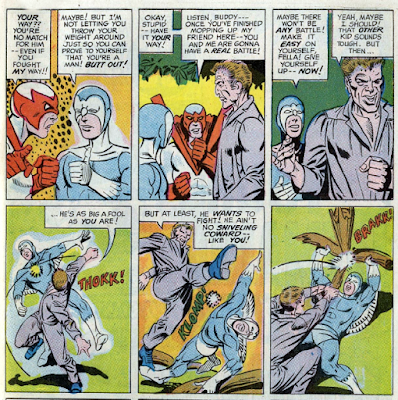 |
| panels from Hawk and Dove v1 #2 (1968) illustrated by Steve Ditko |
The teen-aged Hawk & Dove guest-starred in Teen Titans v1 several times during the 70s and even became members of Titans West — these stories were quite good (mainly because there was less bickering between Hank and Don since they worked as a team unit). Following that, they kind of meandered around the DCU until Dove (Don Hall) was killed off in Crisis on Infinite Earths.
 |
| Crisis On Infinite Earths #12 (1986) - illustrated by George Perez and Jerry Ordway |
 |
| panels from New Teen Titans v2 #20 |
Among other things, the new Hawk & Dove mini-series was a chance to update the original duo for a more contemporary audience. This was nothing to be concerned about... quite a few DC characters were being 'redefined' post-Crisis: Aquaman became a magical-based character in his 1986 mini-series, the mantle of Doctor Fate was passed to a new character in his 1987 mini-series, Power Girl was revealed to actually be Atlantean in her 1988 mini-series, the Martian Manhunter had multiple alterations made to his origin in his 1988 mini-series, and Hawkman and Hawk Woman would experience a major shake-up in 1989's Hawkworld (just to name a few).
If I had to sum up this mini-series in as few sentences as possible, I'd tell you that: a new Dove appears in Hawk's life, they team up to battle a new threat, and ultimately discover that they are agents of Chaos and Order. I realize that this is a very blunt summary, but the writing and pacing of this mini-series is top notch and there are many elements at play here that make this a very interesting and entertaining read.
The first issue opens with the introduction of a new villain, Kestrel, who is hunting down Hawk (Hank Hall). Contrary to popular suspicion, 'Kestrel' is not actually the combination of Barbara's married and maiden names ('Kesel' and 'Randall'), but a species of falcon. (Hey, how about that?) The bird motif runs strong in Hawk & Dove, so best to get used to it early. Barbara mentions in her Forward to the Hawk & Dove TPB that "Kestrel’s name was an inside joke: my friend Ron had used the name (it’s a bird, look it up) as a gaming character- the most peaceful and loving character in the history of role-playing-so we used the name for our vicious mass murderer".
 |
| Hawk & Dove v2 #3 - Kestrel |
As quoted from Barbara Kesel's Forward in the Hawk & Dove TPB:
Karl’s sister and my brother were the original models for the characters of Dawn and Hank (but only the good parts!); our parents became their parents; our friends became their friends. [...] Ren started out as my best friend, but just wouldn’t stay her. As writers, we’re always cannibalizing from our own lives in order to create true false reality, and there is, therefore, a lot of us in the mix.
The secret identity of the new female Dove is a mystery that runs throughout the first several issues of the mini-series (the reader is only introduced to her by the end of the first issue) — the Kesels added a few red herrings to the story to keep the reader guessing who Dove's real identity was (most readers were able to successfully guess it by the end of the second issue).
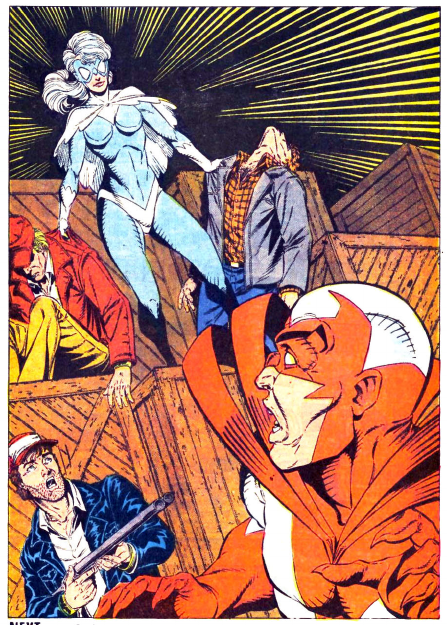 |
| Hawk & Dove v2 #1 - the NEW Dove |
Along with the idea that Hawk and Dove are agents of Chaos and Order comes a bit of retconning in terms of their origins. We learn that 'the Voice' that gave them their powers were actually 'Voices' (plural). This ties in nicely with the Lords of Chaos and Order reveal — because they're a group of entities who work in unison - and also eliminates the confusion that the Voice that gave the original Hawk & Dove their powers wasn't the same Voice [of God] that gave The Spectre his powers. The mini-series ends with a hint that the Agents of Order may not be the benevolent force they appear to be, as the new Dove deduces that Don Hall's Dove powers were taken away from him and given to her minutes before he was killed in Crisis on Infinite Earths (effectively making him an easy target for a Shadow Demon).
Another nice thing about this mini-series is that it clearly defines Hawk & Dove's powers. Whereas the original origin was kind of vague and open to interpretation...
 |
| Showcase #75 (1968) |
...the Kesel's mini-series clarified this with a recap of the duo's powers (or at least the new Dove's):
This re-explanation was greatly needed, as I always felt like the original series left Hawk and Dove's powers too ambiguous. As far as I could tell, Hawk had the power of being really angry and attacking recklessly without thinking, while Dove had the power of trying to slow down his brother and getting punched in the face a lot. Truth be told, I still can't tell if Hawk and Dove's powers of accelerated healing was a power they originally started with back in Showcase or if it was a power the Kesels managed to slide in during this mini-series.
All things considered, the new Dove was far more interesting than the original. Unlike Don Hall, who was either trying to 'prove himself' or refusing to resort to violence (and mainly used evasive and defensive maneuvers), the new Dove was a confident and competent character who used martial arts (with an emphasis on turning the opponents weaknesses on themselves) to deal with her foes.
Let's also not forget that she was a woman with no (apparent) family relation to Hank Hall, which left the door open for potential romantic development between the two. Hawk suddenly acquiring a female Dove was quite the surprise among DC fans. If you check the then-current DC comics landscape back in 1988, there weren't too many strong female characters with a prominent lead role in a title. Sure, there was Wonder Woman (in her own title), Negative Woman in Doom Patrol v2, Wonder Girl and Starfire in New Teen Titans v2, and Black Canary appearing in both Action Comics Weekly and Green Arrow v2 — but out of 50 books being published monthly, that's not an incredibly strong showing. In short, the time was right for a new head-lining female superhero.
In an interview with Jennifer M. Contino for Sequential Tart from 2000, Barbara Kesel revealed that she found a sketch of a female version of Dove while flipping through one of Karl Kesel's sketch books:
"Who's this?" I asked. "Oh," he said, "I always thought Dove should have been a girl character." We chatted, I wrote up the proposal, and poor Carlin got badgered into the series."
One of the most notable things about this mini-series was that it was some of Rob Liefeld's first* published work for DC comics. Actually, it was some of Liefeld's first work for the 'big two' after being scouted by DC comics Executive Editor Dick Giordano at Wonder Con 1987. Liefeld pencilled all five issues and Karl Kesel inked over Liefeld's pencils. Looking back over this mini-series, you begin to notice many Liefeld-isms that would recur in his later work: splash pages filled with energetic and dynamic action poses, characters being loaded up with excessive firearms, careful detail paid to facial expressions and character reactions, and extreme close-ups of large toothy triangular grins. In short, Liefeld brought a fantastic energy to the pages that kept the reader enthralled with visual detail.
* In 1988, a 21 year-old Rob Liefeld had work appear in DC's Secret Origins v2 #28, Warlord #131 and Hawk & Dove v2 #1 - all within several months of each other. Your guess is as good as mine as to which was considered Liefeld's 'first' work for DC.
Readers were quick to pick up on Liefeld's talents and lauded DC for the amazing find (ensuring to mention Karl Kesel's inks which embellished Liefeld's work). One reader even went so far as to suggest that Liefeld might be the next Todd McFarlane (ha! if only they knew).
There's an interesting editorial note from Mike Carlin in the last issue of the series thanking Karl Kessel, inker Keith Williams and inker Bob Lewis for 'sundry assistance during the worst of it' and a reference to Liefeld introducing 'entirely new situations to an Editor who'd thought he'd seen it all'.
Carlin is referring to the fact that Liefeld submitted some of his final pencilled pages for Hawk & Dove v2 #5 in a 'landscape' style [as opposed to the 'portrait' style you see when you read a comic upright]. This led to Karl Kesel and Mike Carlin needing to xerox and lightbox Liefeld's finished panels into an upright position in order to get the book ready for print. I'm assuming Liefeld's submitted work past it's deadline by this point - just to add that extra element of pressure. You can read Karl Kesel's account of this event at Brian Cronin's Comic Book Legends Revealed #36.
Issue #1 of this mini-series was the first appearance of the new Dove as well as the new agent of Chaos, Kestrel. Liefeld played a major hand in designing the new Dove's costume. I've always appreciated the attention to detail in which the new Dove's costume is modeled so closely to Don Hall's costume — preserving a sense of legacy. In an interview with Jennifer M. Contino at Comicon.com, Liefeld revealed that he has a small sense of ownership to the new Dove:
“I designed the character in the late ’80s and originally her costume would reveal no hair at all if I didn’t throw down with the Kesel’s over it. We finally compromised on the ponytail-do, but you have no idea the effort that took.”...and from the same interview:
"When I co-created Kestrel with Barbara and Karl Kesel way back in the mini-series, he was very predator-like, very much a hostile force of evil working on behalf of the agents of Chaos to disrupt the balance of good and evil, tilting it towards evil."Karl Kesel's Forward from the Hawk & Dove trade paperback confirms that 1) Rob insisted that they modify the new Dove's costume to let her hair show, and that 2) Barbara created Kestrel, Rob Liefeld designed his costume, and Mike Carlin decided it would be purple.
Kestrel appeared a few more times in the DCU after this mini-series was concluded - once in a 2005 Teen Titans story arc (illustrated by Liefeld) and as a villain in the 2009 Superman/Batman Public Enemies animated movie.
 |
| Kestrel as he appears in the 1992 Impel DC Cosmic Cards trading card set |
Rob Liefeld illustrating Hawk & Dove (who could both essentially be considered Teen Titans spin-off characters by association) would be a major coup for the artist — he'd been a fan of the Teen Titans longer than he'd been a fan of Marvel's X-Men or Avengers. Liefeld disclosed to Matt Brady in a 2005 Newsarama interview:
"I was a major, big time fan of the Teen Titans as a kid. I loved the comic in the mid 70’s incarnation prior to Marv Wolfman and George Perez’s ’80s re-launch. I loved the Aquaman cartoon because it had the Teen Titan feature on it, the one where Kid Flash’s costume colors were reversed to red on top and yellow legs... I love the Titans, yes."
"A little known fact is that I was an early member of the ’80s Teen Titans fan club, Titan Talk along with my early Youngblood collaborator and current Wildstorm exec Hank Kanalz. And even more little known is that I’m on the guest book in Teen Titans #50, the Wedding of Donna Troy. George [Perez] had my name added to the guest list. If I’d been on time with my photo, George would have drawn me in the book. See, I’ve always been late, deadline challenged... even as a kid."
 |
| Liefeld's name in the Donna Troy/Terry Long guest list. Just above Dick Giordano's. |
From the same Newsarama interview, Brady asked about other Teen Titans plans Liefeld may have had with DC following the Hawk & Dove mini-series:
"I proposed a new Titans book in 1991, Team Titans was the proposal, Jon Peterson who edited the book approved it, Marv Wolfman signed on to co-write it and then I couldn’t make the deal with Dick Giordano. God bless him, we just couldn’t make the numbers work. So I took my proposal and merged it with an existing indie project I had called Youngblood. Next thing you know, POOF... Image comics was born."This kind of makes you see Youngblood in a whole new light, doesn't it?
"Shaft was intended to be Speedy. Vogue was a new Harlequin design, Combat was a Kh’undian warrior circa the Legion of Super Heroes, ditto for Photon and Die Hard was a Star Labs android. I forgot who Chapel was supposed to be. So there you have it, the secret origin of Youngblood."
Overwhelmingly positive reader response to this mini-series [apparently it sold really REALLY well] led to a 1989 Hawk & Dove v3 ongoing series that was also written by Karl and Barbara Kesel. Liefeld was NOT the penciller for the new ongoing series (he would begin a regular stint at Marvel comics about 6 months after this mini-series saw print). Liefeld would illustrate Hawk and Dove again in 2011's Hawk & Dove v5 for DC's New 52.
This mini-series had all of the hallmarks of a great book — excellent writing and pacing, fantastic art, interesting characters and support cast, progressive character development, a bit of humor, the introduction of new characters while paying respect to the legacy (lots of Crisis references in here), the creation of bigger over-arching mysteries, a feeling that it was tied to the 'bigger picture' of the DCU — so I'm not surprised it got the green light for an ongoing series.
Barbara Randall Kesel has gone on the record to say that this mini-series was about love and "the way it can invade and change your life without any respect for the way things had been, or perhaps should have been... Our love, and the feeling that a complementary partner is important to our own completion. Love for others, and what it will let you give up or give of yourself...". I totally missed this the first time. Next time I re-read this, I will look more carefully for this.
I would recommend this series to everyone — especially Rob Liefeld fans who want to see some of his early work. This mini-series was last reprinted in 2012's Hawk & Dove: Ghost and Demons TPB — catch it if you can.
-Justin
Special thanks to Titanstower.com for preserving those Rob Liefeld interviews we quoted in this article and those snippets of Forward written by the Kesels as found in the 1993 Hawk & Dove TPB.
Big thanks to Jennifer M. Contino and Matt Brady for having the gumption to interview Barabara Randal and Rob Liefeld about this mini-series over a decade ago — without your interviews, this article would've mainly consisted of educated guesses and speculation on my part.
Read more:
You can read more about the original 1968 Hawk & Dove at Dial "B" for Blog's The Secret Origins of Hawk and Dove.
An entry from Fraser Sherman's blog reveals that writer Steve Skeates had different ideas for the original 1968 Hawk & Dove duo, but was discouraged by DC editorial.


















